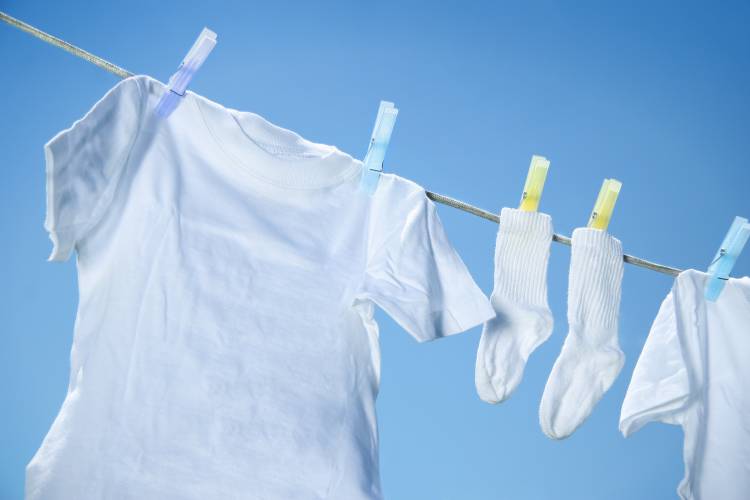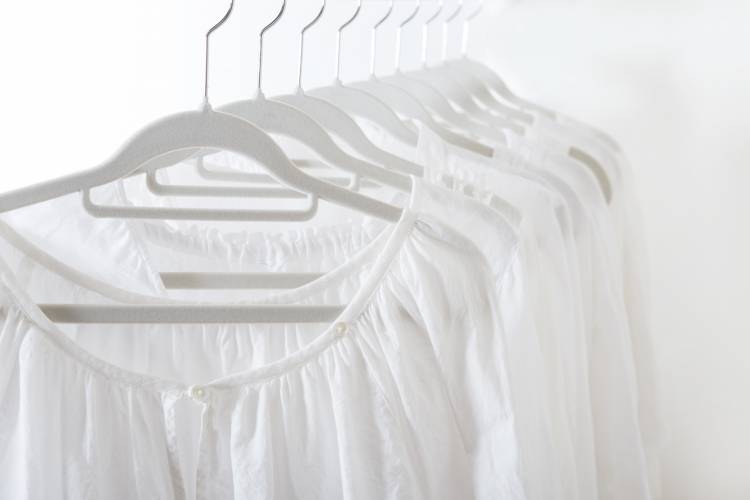How to wash white clothes
White clothes go with everything, everything except stains. We analyse, step by step, how to wash white clothes so that they keep their colour and are stain-free.
TRIED AND TESTED
Share

White garments are one of the most difficult things about doing the laundry. With time, white clothes turn yellow, their original colour fades or the garments absorb the colours of the dark clothes they have contact with during the wash cycle. To avoid these problems, as well as getting rid of occasional stains, it is necessary to follow some simple, but effective, steps which will help you to return the white colour to your clothes.
How to wash white clothes, step by step
- Wash white clothes without mixing them with coloured garments. White clothes should always be washed separately, otherwise they can stain if coloured clothes run.
- Separate white clothing depending on how dirty it is. For example, if you are washing muddy white sports socks with used shirts of the same colour, but just for work, they can stain further instead of becoming shiny white.
- Read the manufacturer's label carefully. The label gives you instructions on washing, the temperature of the water, the recommended cycle, if you can use bleach or not, what spin speed to use, and how to dry the clothes. Following the instructions is essential for an optimum washing result.
- Wash white clothes in hot water wherever possible. Hot water gets rid of bacteria and germs and it helps clothes to keep their original whiteness. Remember to adjust the water temperature to avoid clothing from shrinking or becoming misshaped.
- If you need to get rid of wine or chocolate stains, it is better to use cold water which is more effective on this type of stains.
- Add the correct amount of detergent according to the manufacturer’s instructions. If you add too much, you will be left with soap residue and annoying stains. The quantity of detergent to use is different depending on how dirty the clothes are, the hardness of the water, and the amount of clothes.
- Dry white clothes outside, if possible. The rays of sunlight cause a natural whitening effect on clothes which helps to maintain the factory whiteness. In addition, drying clothes outside uses less electricity and is much more environmentally sustainable that using a dryer.
Bleach: Yes or no?
Bleach has great whitening power, but its repeated use or an excessive amount can damage the fabric of garments and turn them yellow, being counter-productive. From the chemical point of view, bleach is a great disinfectant and whitener, but it is also a harmful agent for clothes. Its use is only suitable when there is no other option to get rid of stains. Keep in mind that, to avoid damaging clothes, the washing temperature needs to be below 50 degrees.

Three tips for whitening clothes
- Us a mixture of lemon and salt to whiten cotton garments. Put the garment or garments in a wash basin with water, laundry detergent, the juice of a few lemons, and a pinch of salt. Leave it to work on the clothes for at least half an hour and then rinse with water and wash them again in the washing machine.
- For wool garments, a drop of oxygenated water will help yellowish clothes to stop being yellow. Put the white clothes in the washing machine, select a programme for delicate garments, cold water and mild detergent. The oxygenated water should go in the bleach compartment. If you are washing by hand, add the oxygenated water when you rinse the clothes
- Substitute chemical whitener for borax. Borax is a chemical compound which is similar to bicarbonate of soda that whitens and deodorises clothes. You should use it with a normal washing machine programme and only use the exact dose that appears on the packaging.






